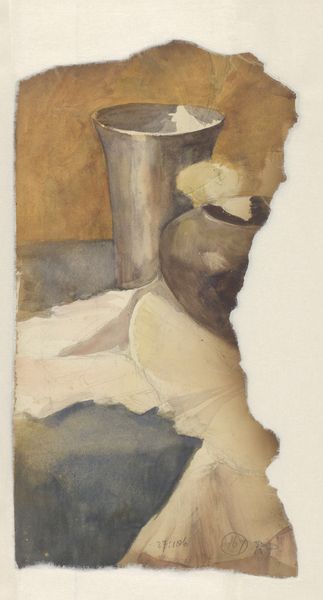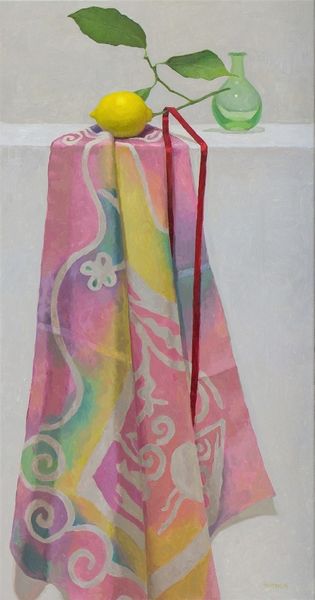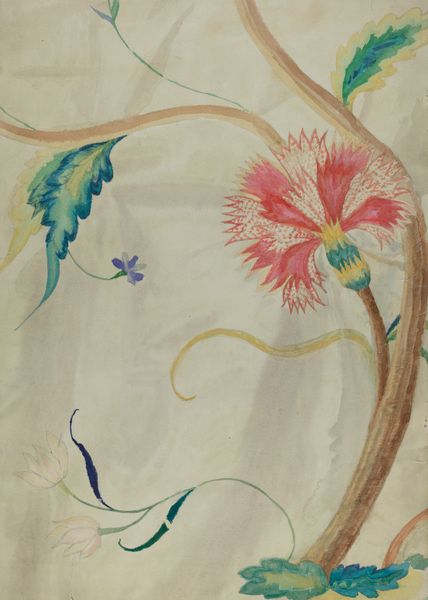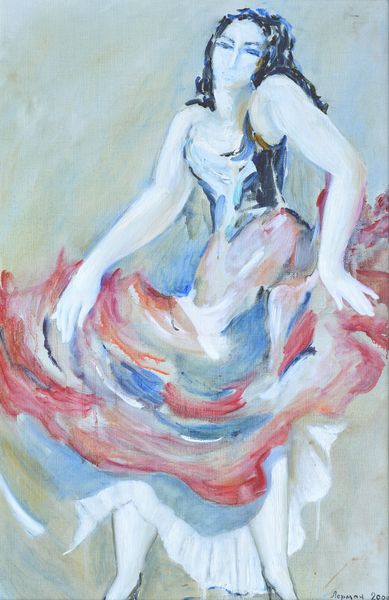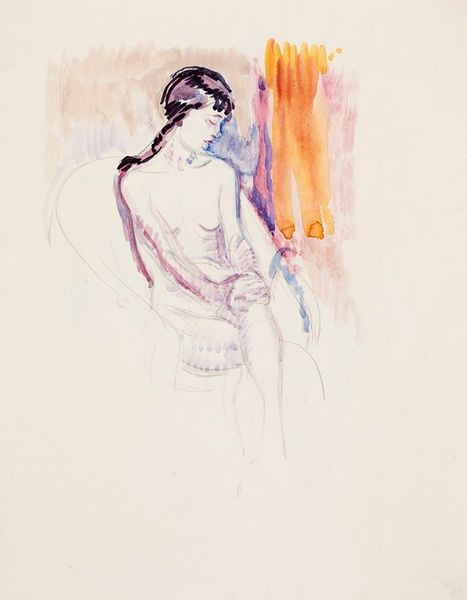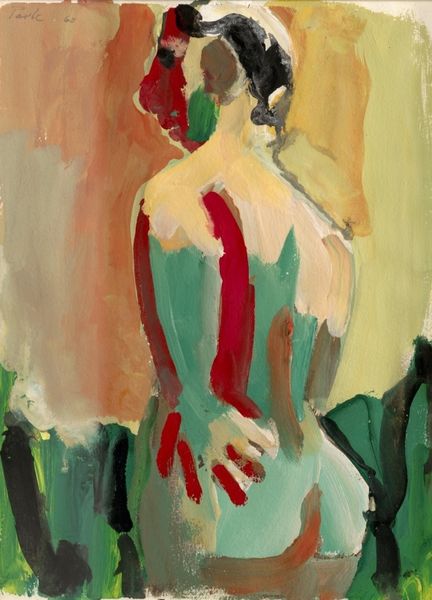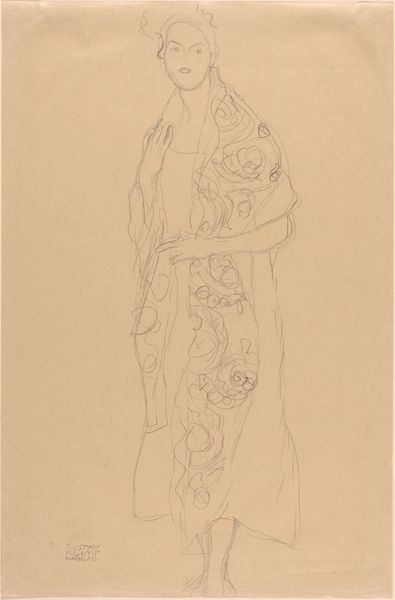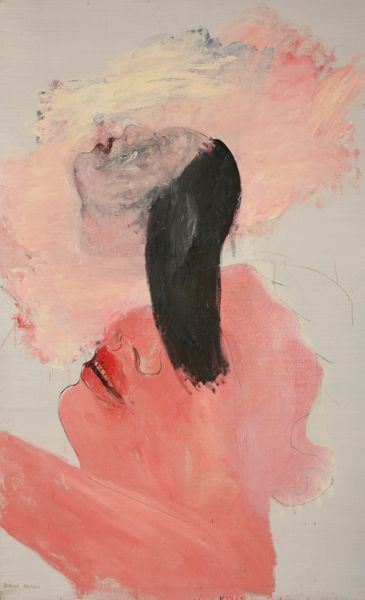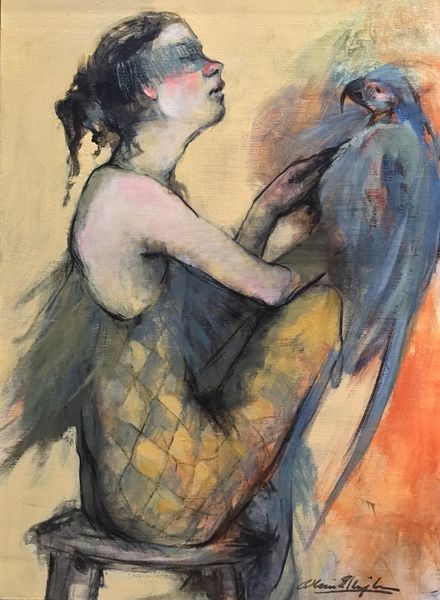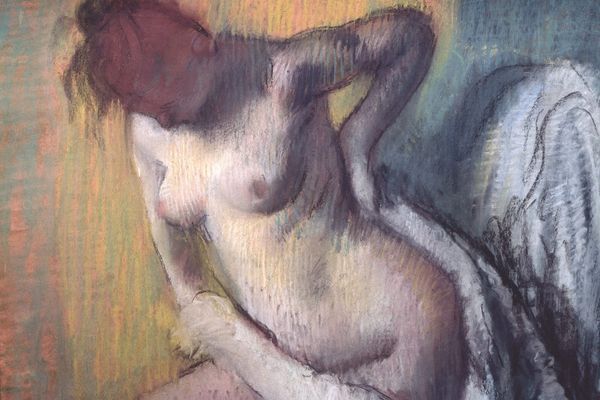
oil-paint, canvas
#
oil-paint
#
oil painting
#
canvas
#
realism
Dimensions: 51 cm (height) x 20 cm (width) (Netto)
Curator: Up next, we have "Dragtstudier. Megara" – roughly translated, "Costume Studies. Megara" – painted in 1896 by Niels Skovgaard, now residing here at the SMK. Oil on canvas. Editor: It has a distinctly wistful feel. The unfinished quality... like catching fleeting impressions of another time. The canvas showing through—is that intentional, or just a sketch? Curator: I think the visible canvas is vital. For Skovgaard, it transforms what might have been a formal exercise in costume study into something that feels profoundly connected to the labor involved, the physical act of painting. The burlap-like quality pushes it towards a sense of humble origins. Editor: Yes, precisely! Look at the different textures evoked—the stiff, ornamented sleeve contrasts so strikingly with the delicate lace, then the flat ground of the canvas asserts itself, denying illusion, making us acutely aware of the objecthood of the painting itself. And those almost ghostly head coverings! Curator: They appear so ephemeral. Almost as if Skovgaard tried to capture something beyond just fabric, some lingering essence of the wearer. I imagine the way the clothing feels against the skin, its rustle and weight—trying to preserve those almost impossible-to-hold sensations. Editor: And how are those clothes worn? Who might be wearing them and how would wearing them signify labor and consumption? What would people surmise from these fabrics in 1896? It's an assertion of what material says about status and belonging. Curator: I agree completely. The "Megara" reference in the title suggests Greece, evoking classicism but then filtered through a very specific Northern European gaze, trying to grasp the tangible reality behind an idea, trying to ground beauty. Editor: The piece then highlights not just what clothing represents symbolically but also, fundamentally, what fabric *is*, how it's made, its origin. It's a tangible way of engaging with art history as a product of materials and making, not simply ethereal artistic intent. Curator: It really shows how looking closer at even a seemingly simple sketch can unlock so many avenues for considering the relationship between process and the search for the intangible. Editor: Absolutely, making it clear: art comes to life only by what is touched, sewn, and then worn into memory.
Comments
No comments
Be the first to comment and join the conversation on the ultimate creative platform.

